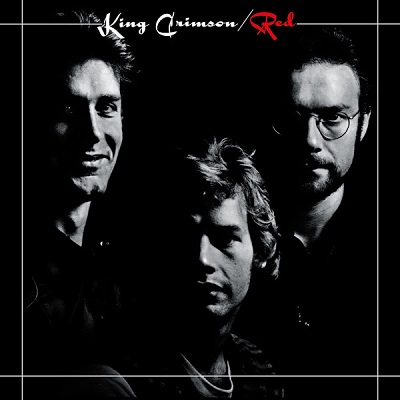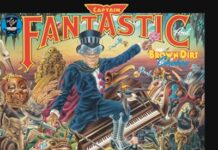You can’t really talk about King Crimson without bringing up Red. It was released five years after the group’s debut, In The Court Of The Crimson King, and unceremoniously became their final album of the 70s when leader Robert Fripp pulled the plug and changed course. Despite its initial lack of sales on the charts, Red has a large legion of fans, many who consider it King Crimson’s greatest album. Much of it was covered live during Crimson’s last few years; more recently, the BEAT collective featuring former Crimson members Adrian Belew and Tony Levin, both of whom do not appear on the original recording, played “Red” at their shows. Its mark cannot be celebrated enough. For its 50th anniversary, a Red box set was inevitable.
And that’s what Burning Shed has delivered: a four-disc set with two CDs and two Blu-ray Discs filled with new mixes of the album in Dolby Atmos, 5.1 DTS-HD MA Surround and high-resolution stereo by Steven Wilson, as well as new Elemental mixes in high-resolution stereo by David Singleton, plus three mixes of the live album USA, bootleg concert recordings from the 1974 US tour including the band’s final US show in New York City’s Central Park on July 1st, 1974.
The set holds special appeal for audiophiles and high-resolution audio enthusiasts. Like recent reissues of In The Court Of The Crimson King and Larks’ Tongues In Aspic, the Red box is a full-bodied upgrade from Discipline Global Mobile’s 40th anniversary reissue series, which featured 5.1 mixes on DVD. The first Blu-ray has various stereo mixes of USA and additional live shows from 1974. Sound quality varies, but you’ll hear some incredible performances.
The second Blu-ray features three 2024 mixes by Steven Wilson for Dolby Atmos, DTS HA-MA 5.1 surround and LPCM Stereo 24/96. If you have the right system, prepare yourself for a sonic blast. From the title track right on through to “Starless,” there’s never a stray nuance from sheer velocity. Eager to tear away the tracks and have peak under the hood? David Singleton’s Elemental mixes break the songs down, giving particular attention to “One More Red Nightmare” and “Starless.” Spend a night with this disc, and you’ll never look back. If Blu-ray isn’t part of your system, everything except the surround and Atmos mixes are on the set’s two CDs.
As for the legacy of Red, so much can be said. The band had been reduced to the core trio of guitarist Robert Fripp, bassist and vocalist John Wetton, and drummer Bill Bruford — the only lineup to appear on a King Crimson album cover — yet they got plenty of support. Fripp was able to solicit contributions from former members David Cross (violin), Mel Collins (soprano saxophone) and Ian McDonald (alto saxophone). Additional players include Mark Charig on cornet and Robin Miller on oboe. Without the horns, violin, and Mellotron, Red would have sorely lacked the dynamics and musicality so essential to its execution. Listen to how “Fallen Angel” swims through it all with subtle grace and dirty elegance.
Of course, the trio take firm control of the title track, an epic instrumental with a riff so powerful and in the gut, it could be a wayward anthem for the heavy metal nation. On both “One More Red Nightmare” and “Starless,” Wetton confidently asserts his vocal prowess, which usually angled for time against instrumentals on previous Crimson albums. He wouldn’t be as assured in the role of lead singer until he and Asia ran playfully through a pop-infested minefield in the 80s. Fripp had no pre-conceived notions about Red when he disbanded King Crimson prior to its release. The band and the music industry itself had left him searching for something new and different. He worked with Brian Eno, David Bowie, Peter Gabriel, and tweaked out his Frippertronics bag of tricks until the Crimson bug came back around in 1981. Even then “Red” was part of the 80s lineup’s live repertoire (which explains the Belew and Levin connection). Next to In The Court Of The Crimson King, the album most any hardcore King Crimson fan reaches for next is Red. Comb through the box set, and it’s easy to understand why.
~ Shawn Perry




















